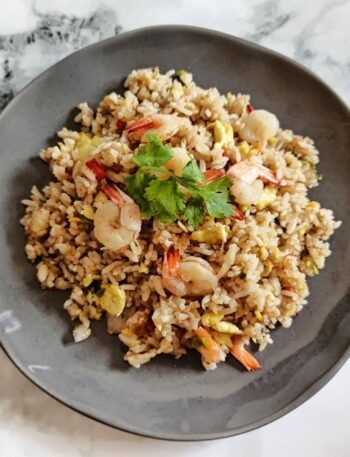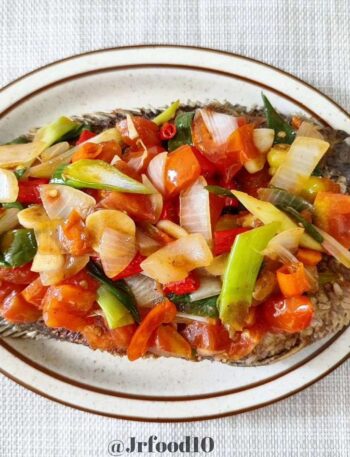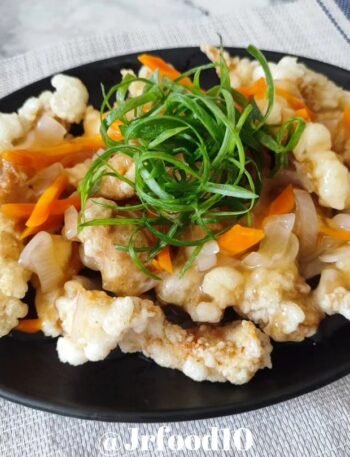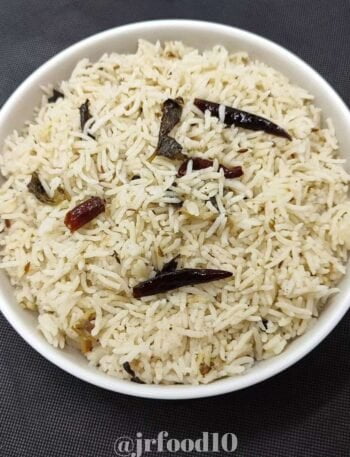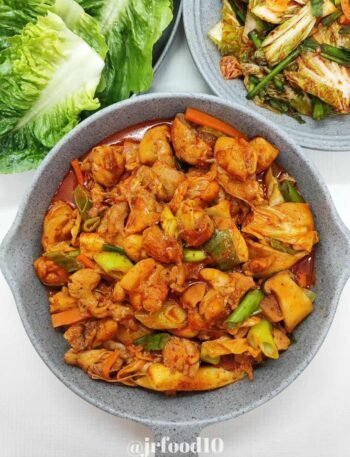Korean Glass Noodles (Japchae)
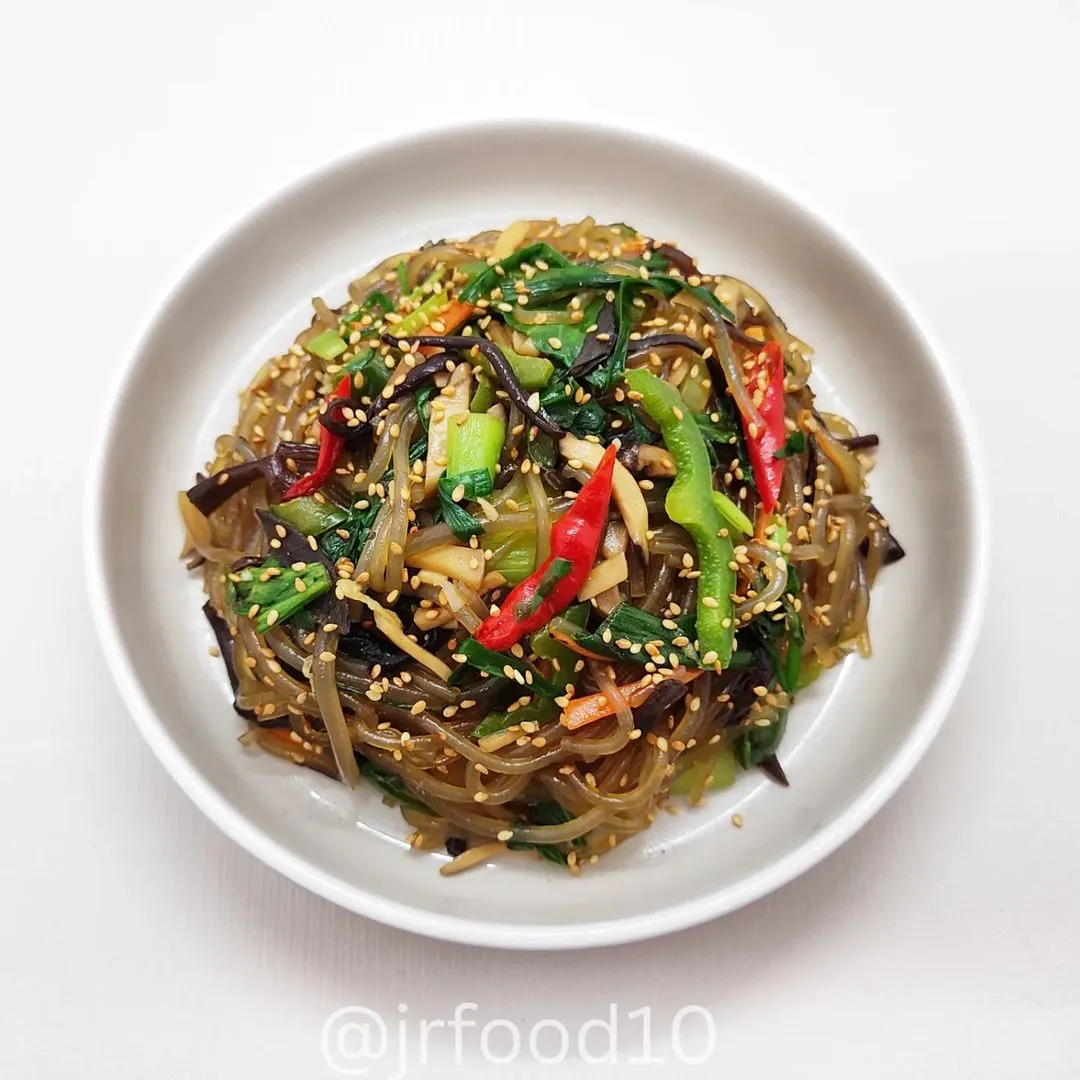
Welcome to the wondrous world of Korean cuisine, where every bite tells a tale of tradition and taste. Today, we’re embarking on a flavorful journey into the heart of one of Korea’s most beloved dishes – Korean Glass Noodle! Picture this: a symphony of vibrant colors, a dance of textures, and a melody of flavors that will make your taste buds groove with delight.
Japchae, also known as “Korean glass noodles,” is not just a dish; it’s a celebration on a plate. Think of it as a culinary masterpiece where sweet and savory notes join forces to create a party in your mouth. What makes it extra special? The delightful tangle of chewy sweet potato noodles, a rainbow of crisp, fresh vegetables, and the magic touch of a savory soy-based sauce.
But here’s the best part – making Japchae is not just cooking; it’s a kitchen fiesta waiting to happen! So, roll up your sleeves, tie on your apron, and let’s dive into the world of Japchae. Get ready for a cooking adventure that’s as fun as it is delicious!
Explore few recipes that you might like:
Korean Glass Noodles (Japchae)
A medley of sweet potato noodles, a riot of fresh veggies, and a magical concoction of seasonings all coming together in a culinary tango that's as delightful to cook as it is to devour.

Ingredients
Instructions
Begin by bringing water to a boil, and then cook the Korean sweet potato noodles until they reach the perfect tenderness.
Once cooked, remove them from heat, drain excess water, and drizzle with a combination of sesame oil and soy sauce. Stir well to ensure each strand of noodle is coated in flavor.
In a separate pan, pour in 1 tbsp of sesame oil and sauté the spring onion leaves, green peppers, carrots, pakchoy, and wood ear mushrooms until they reach a delightful state of tenderness.
Once cooked, add this vegetable medley to the seasoned noodles, ensuring a symphony of flavors in every bite.
In a small bowl, mix chopped garlic with a pinch of salt, a dash of sugar, and mushroom bouillon. Add this flavor-packed mixture to the noodle bowl.
Sprinkle sesame seeds generously over your Japchae, adding a final touch that not only enhances the dish's aesthetics but also introduces a delightful crunch to each bite.
Servings 2
- Amount Per Serving
- Calories 659kcal
- % Daily Value *
- Total Fat 20.6g32%
- Saturated Fat 2.9g15%
- Sodium 21083mg879%
- Potassium 405mg12%
- Total Carbohydrate 107.3g36%
- Dietary Fiber 2.7g11%
- Sugars 6g
- Protein 3.3g7%
- Calcium 64 mg
- Iron 6 mg
* The % Daily Value (DV) tells you how much a nutrient in a food serving contributes to a daily diet. 2,000 calorie a day is used for general nutrition advice.
Note
- Be mindful not to overcook the sweet potato noodles. They should be cooked until just tender to maintain a chewy texture. Immediately draining and rinsing them in cold water after boiling will prevent them from sticking together.
- Taste as you go and adjust the seasoning accordingly. If you prefer a sweeter taste, add a bit more sugar; if you like it saltier, adjust the soy sauce. Achieving the right balance of sweet, salty, and savory is the key to a perfect Japchae.
Frequently Asked Questions
Korean sweet potato noodles are widely available in Asian grocery stores or the international section of larger supermarkets. They may also be available for purchase online.
Yes, Japchae is versatile, and you can customize it to your taste. Feel free to experiment with different vegetables or substitute ingredients based on your preferences or dietary restrictions.
Yes, Japchae can be adapted for vegetarian or vegan diets by omitting meat and ensuring that the soy sauce used is vegan-friendly. It's a versatile dish that accommodates various dietary preferences.
In addition to sesame seeds, you can garnish Japchae with chopped green onions for freshness or crushed roasted seaweed for added flavor and texture.
Yes, you can make Japchae gluten-free by using gluten-free soy sauce or tamari. Ensure that other ingredients are also gluten-free if needed.
Absolutely! Japchae pairs well with various Korean dishes. Consider serving it alongside grilled meats, tofu, or as part of a broader Korean-themed meal.





